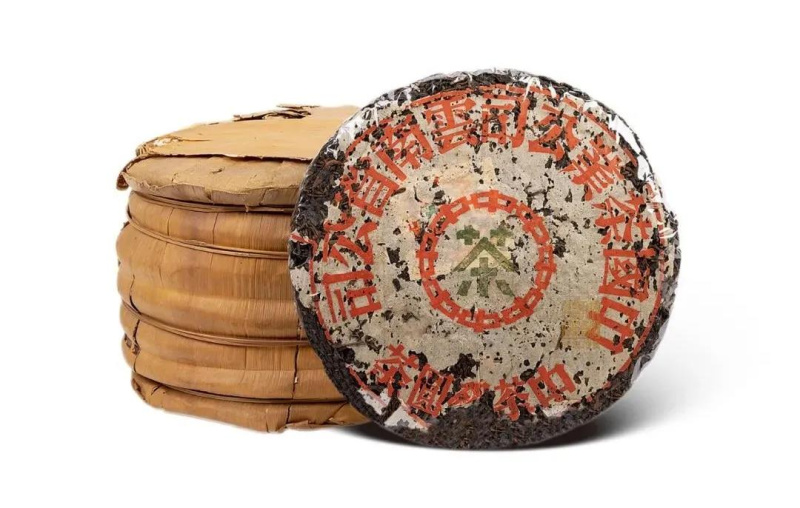Sheng Puer "7538" (2007) from Changtai: the maturity of the classic recipe
This Sheng Pu'er (生普洱, Shēng pǔ'ěr), produced in 2007 by the famous Changtai factory (昌泰, Chāngtài) according to the classic recipe "7538". It is presented in the traditional form of a 357-gram Bing Cha (饼茶, Bǐng chá) cake and is a prime example of a well-aged Sheng Pu'er that has reached significant maturity.
Manufacturer Chāngtài (昌泰, Chāngtài) and recipe "7538"
Changtai Tea Group, founded in 1999, quickly became a major player in the pu-erh market, producing tea under various brands (including Changtai Hao and Yichang Hao). The factory is known for producing its own unique blends as well as working with classic numbered recipes.
The recipe for "7538" follows the traditional pu-erh numbering system developed in the mid-20th century:
- 75: Indicates the year the original recipe was created – 1975. This links this blend to the golden era of standardized pu-erh recipes.
- 3: Indicates the main grade of leaf used in the blend. The number '3' indicates the use of relatively delicate raw materials - with a higher content of buds and young, small leaves compared to recipes using grades 5, 7 or 8.
- 8: In the classic state factory system, this number denoted the factory code. For the later-established Changtai factory, the number '8' is the internal code of the Changtai factory itself and indicates the specificity of the blend/region in their system.
Thus, Changtai's "7538" is their interpretation of the classic 1975 recipe, created on the basis of relatively delicate 3rd grade raw materials.
Vintage 2007: deeply aged (17+ years)
The most important thing about this tea is its age. The 2007 tea has been aged for over 17 years at the moment (April 2025). During this time, deep transformations occur with sheng puer:
- The youthful bitterness, harshness and astringency disappear.
- Complex, noble aromas and flavours develop with ageing.
- The infusion acquires dark, rich shades.
- The character of the tea becomes soft, smooth, deep and soothing. The tea is in a wonderful drinking age, having fully revealed its potential for maturity.
A standard 357 gram cake is an ideal format for long-term storage and gradual consumption of pu-erh.
Taste and aroma
- Aroma: Deep, complex, warm. Characteristic notes of aging: camphor, old wood, dry medicinal herbs, shades of dried dark fruits (prunes, dates), noble earthiness ( chen xiang ), a slight hint of nuts and old leather. The aroma is clean, without unpleasant notes of dampness.
- Taste: Very soft, smooth, silky, without bitterness. The taste is enveloping, sweetish, with notes of camphor, wood, dried fruits, with a slight minerality and grassy sweetness. Long, pleasant aftertaste ( huigan ) and a comfortable sensation in the throat ( houyun ).
- Infusion: Thick, oily. The color of the infusion is rich amber.
Brewing recommendations
Aged sheng puer requires a slightly different approach than young:
- Utensils: A Yixing clay teapot will bring out the depth of a well-aged sheng, but a porcelain gaiwan will also work.
- Amount of tea: 5-7 grams per 100-150 ml of water.
- Water: Boiling water (95-100°C).
- Washing: One quick wash is enough for clean aged tea.
- Brewing: Start with slightly longer steeps than for young sheng (e.g. 15-25 seconds), as aged tea releases its flavor more slowly but steadily. Gradually increase the time. The tea can withstand many steeps.
Sheng puer "7538" 2007 from the Changtai factory is a great opportunity to try mature, well-aged sheng puer, created according to the classic recipe based on relatively tender raw materials. Age over 17 years guarantees softness, depth and complexity of taste with characteristic notes of camphor, wood, dried fruits and herbs. This tea is for connoisseurs of aged shengs, looking for harmony, depth and a meditative state in a cup.
|
Country
|
China |
|
Provinces
|
Yunnan (云南) |
|
Manufacturer
|
Чантай (昌泰) |
|
Raw material production date
|
2007 |
|
Year of pressing
|
2007 |
|
Pressing form
|
Bing Cha (Cake Tea) |
- Комментарии
- Вконтакте
Pu-erh is one of the most unique types of tea, which only gets better with age. Many people, when they first encounter this tea, wondered: why is pu-erh more often found in pressed form (cakes, bricks, tochas), and not in loose form? The reasons for this are related to both history and the practical aspects of storing and fermenting tea. Despite modern technologies that allow the production of loose pu-erh, the shape of pressed cakes remains unchanged. And pu-erh is more often found on sale in pressed form, for example, in the form of cakes or bricks, and loose pu-erh is less common. We will talk about the reasons for pressing pu-erh into cakes in this article.
Puer is a unique Chinese tea that is distinguished by its depth of taste, complexity of aromas and versatility of aftertaste. Its taste characteristics are formed under the influence of many factors, from growing conditions to the brewing method. Let's look at the main ones.





















































































